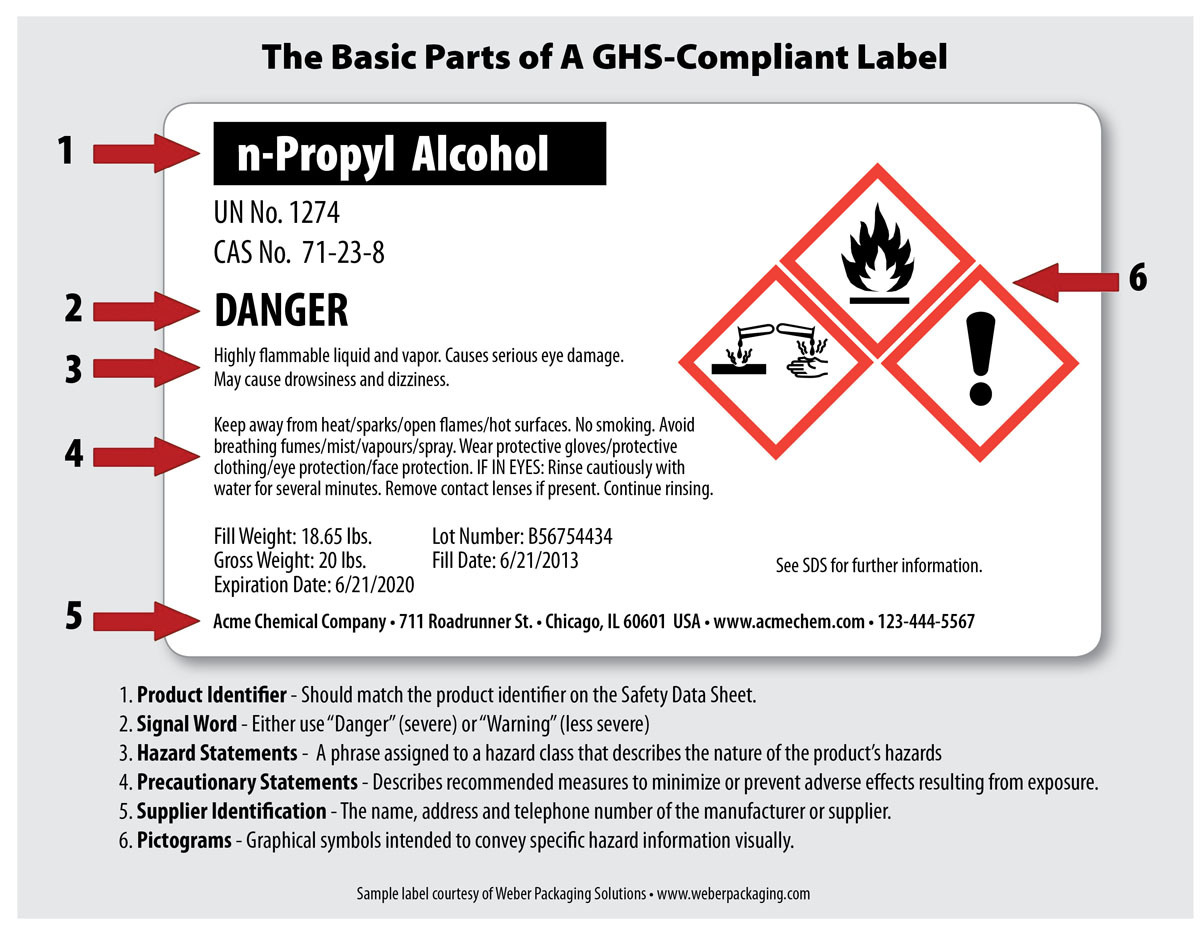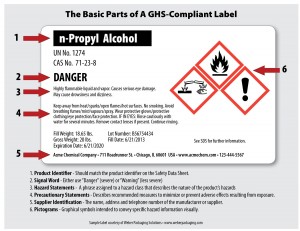Seven Elements of a Standard GHS Label
In our last blog post, we gave an overview of the Global Harmony System (GHS), a universal system for classifying, categorizing, and labeling hazardous chemicals. We also discussed how and when chemical users and producers should make the transition to GHS. This week we’ll be talking in detail about the GHS compliant labels.
The standard GHS compliant label is a label that will be applied to a chemical container or external chemical packaging. Before creating a GHS compliant label, chemical producers, importers, and distributors should identify and classify the chemical’s health and physical hazards according to criteria set down by Occupational Safety and Health Administration (OSHA) that can be found in Appendices A and B of the revised Hazard Communication Standard. Once these classifications have been established, Appendix C should be consulted to determine the proper information to be included within the 7 elements of the GHS label.
The standard GHS label is made up of 7 different elements that help a chemical handler to easily identify a chemical and understand the specific hazards it poses.
1. The Product Identifier should identify the hazardous chemical by an appropriate term (e.g. chemical name, code number, batch number).
2. Signal Words let the reader know that the chemical is hazardous. Depending on the severity of the chemical hazard, either “Danger” (connoting more severe hazard) or “Warning” (connoting less severe hazard) will be used. There’s only one word per label and, since hazards exist within a variety of classes, a “Danger”-level warning in one class will always trump a “Warning”-level hazard in another.
3. Hazard Statements specify the nature and degree of the chemical hazard. If necessary, labels should contain multiple hazard statements (hazard statements may be combined for clarity). Within each hazard classification category, a standardized statement should exist for each specific hazard (i.e. the hazard statement for a specific hazard should not vary from company to company or from chemical to chemical).
4. Precautionary Statements outline the suggested measures for lowering the risk of harm from a chemical. Four different types of precautionary statements should be provided: a prevention statement that gives advice for minimizing exposure, a response statement that describes actions to carried out in case of emergency or exposure, a statement about how the chemical should be stored, and a statement that describes proper disposal procedures. As with Hazard Statements, there is some leeway for Precautionary Statements; they can be combined or shortened for clarity.
5. Name, Address and Telephone Number of the chemical manufacturer, supplier, importer, or otherwise responsible individual or group.
6. Pictograms surrounded by a red border illustrate the hazards of a chemical without using words making them universally readable. Currently GHS contains nine pictograms (see below) all of which will be enforced by OSHA except the environmental pictogram, which is optional. One label can, and often does, contain multiple pictograms to connote multiple hazards.
(Optional) Supplementary Information may be provided if there are more elements that the label writer deems appropriate to include. This section should also include the percentage of ingredients of unknown toxicity existing at 1% or more within the mixture if the chemical has not been classified and tested as a mixture.
Though chemical manufacturers, distributors, and importers aren’t required to adhere to these new labeling standards until June 1, 2015, they may start using the new GHS labeling system at any time. In just a few months, on December 1, 2013, employers are required to have trained their employees to read these GHS compliant labels and to understand the new Safety Data Sheets.
If you have questions about printing, customizing, or understanding the new GHS labels, please feel free to contact us.

